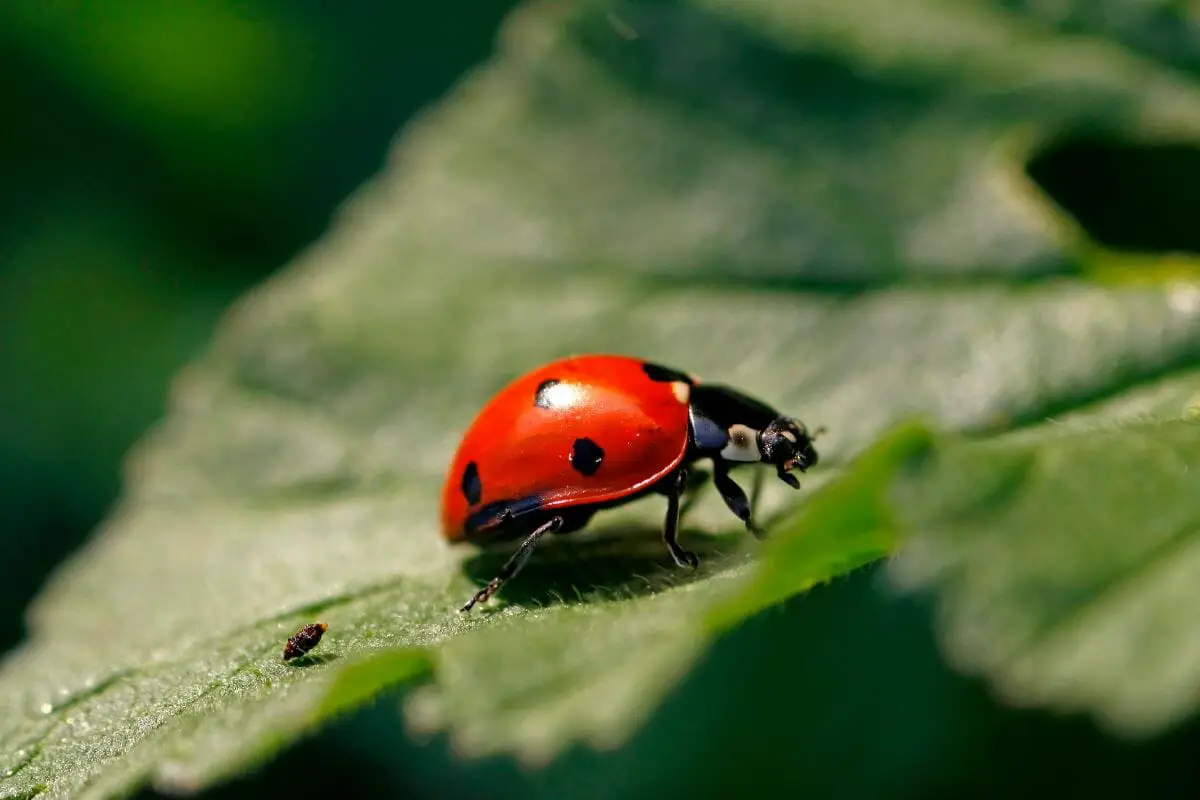When it comes to attractive insects, then the ladybug has earned a special place in our hearts.
These cute and colorful insects are some of the most loved creatures in any backyard, but what makes them so cute?
These creatures are known to many different cultures and many different nations, with each one having a particular significance.

But there are many ladybirds that are considered pests in certain parts of the gardening world.
So which ladybugs are nice and which are not-so-nice? Where in the country can you find insects such as this?
What differs about ladybugs from different parts of the world? Well, if you want the answers to these questions and a whole lot more, we would recommend that you read on.
What Do Ladybugs Feed On?
Ladybugs largely eat aphids, which you’ll probably have seen as the little green things that you get on your garden patio.
When ladybugs are very young, they will often feed on the unhatched eggs of their brothers and sisters.
This is because the first ones to hatch eat what is immediately around them, which is often the shells of their siblings.
Ladybugs will also feed on things like honeydew and tree sap if aphids are in short supply. It will also feed on parts of a plant including the stems and the meatier parts of the leaf.
However, the ladybug will often prefer dry vegetation as opposed to moist leaves.
Types Of Lady Bug
There are many different types of ladybug and you might have already seen a few in your backyard.
However, here is a list of a few that you can consult when you are ladybug spotting during the summer seasons when they come out to play:
1. The Seven-Spotted Ladybug
These types of ladybug can be found throughout Europe and are some of the most common.
They are mainly red with three black spots on each wing. They also have another black spot that is situated between the two wings.
This type of beetle is referred to as the C-7 beetle, and they also feed on larvae and other creatures.
Like a lot of ladybugs, they will often feed on aphids. They can be found in crop fields and dry grassland areas.
However, the number of these common ladybugs has been greatly reduced simply because of pesticides that have been used to decimate the leaf-devouring aphids, which is their main source of foods.
2. The Two-Spotted Ladybug
This kind of ladybug is one of the most cannibalistic of the lot, often found eating beetles that are similar in size.
This type of ladybug is often used as a biological control against other types of ladybugs who tend to eat the crops. These are also used in greenhouses to keep the level of other insects down to a minimum.
This ladybug is also easy to recognize, with adults usually having just two large black dots, one of each wing.
3. The Thirteen-Spotted Ladybug
This is another type of domed ladybug that comes with a domed back and short shiny legs. They also have two covers on their wings, which they only unsheath when they are flying.
These ladybugs are often orange in color rather than the traditional red. They have lots of black splotches on their back, which is why they are often referred to as the ‘thirteen-spot ladybug’.
They have very distinctive young, coming in the traditional larvae shape that are slightly flat and covered in spines.
They will only lay smaller groups of eggs, usually a group of around 10 – 15 small eggs.
4. The Asian Ladybug

Next up, we have a breed of ladybug that actually comes in a range of different colors. They come in various colors from red to yellow to black.
This is one of the most commonly-found ladybugs in North America.
This type of ladybug has white segments on its heads and they often tend to invade the houses of Americans during the fall months of October and Halloween time.
This ladybug had to eat a lot of food before the winter season, as they will hibernate for a long period of time.
This Asian ladybug is often found in areas of North America, although you can actually find a lot of these breeds in the UK.
5. The Coleomegilla Maculate Ladybird
This next ladybug will certainly be noticeable in that it is much smaller, with an elliptical shape and a medium-sized body.
The distinctive pink color will range from hued pink with shades of black and red spots that are covered all over its body.
This type of ladybug is one of the most ravenous predators, eating up many different types of aphids as well as flies, mites, beetles and smaller insect eggs. This ladybug is also used as an alternative for pest control.
This species of ladybug will also eat up plant pollen. Some farmers introduce this ladybug into their farmyard in order to pollinate their fields. They usually consume around 50% pollen and 50% aphids.
6. The Hippodamia Convergens Ladybug
This is a medium-sized ladybug that you can often find in your backyard. It is usually yellow or orange in color with black spots that are covering their bodies.
These are also ravenous aphid-eaters.
Ladybug Facts And Trivia
Most ladybugs will feed on grass and dry leaves, generally avoiding areas that are too moist. Their primary diet is aphids and they can often be found where there are large quantities of this little green insect.
On average, a ladybug will live around 2 – 3 years, although this will be heavily dependent on the climate they’ll be living in.
Ladybugs will vary in size, although on average they will range from anywhere between 0.3 and 0.4 inches in length.
They often have brighter colors to ward off predators, although some of these ladybugs are poisonous for certain animals to eat.
Conclusion
We hope that our guide to various ladybugs has given you a greater appreciation of this small insect. Next time you’re in your backyard, look for different types of ladybugs.









